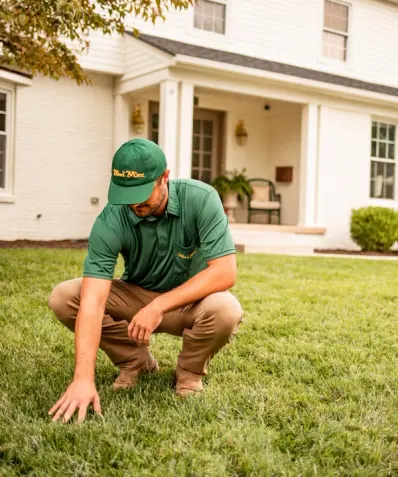Goodbye Weeds. Hello Wins!
Eliminate unsightly and aggressive weeds with top-of-the-line products, specially tailored to the needs of your lawn and safely applied in the hands of our trained professionals.
Achieve golf course quality results with Weed Man's premium, proprietary, slow-release granular fertilizer, specially blended with your lawn's nutrition in mind.
Defend your lawn from grub damage. Our trained and certified technicians will identify the infestation and recommend the best solution for your lawn.
Aeration promotes good root health by removing small cores of soil to reduce your lawn’s thatch layer, allowing water, air, and nutrients to reach the areas that need it most.
Overseeding strengthens your lawn and replenishes thin or bare areas with high quality grass seed.
Granular topdressing restores the health of your lawn with a fortified mix of topsoil, compost, and other micro-nutrients.
Weed Man's soil management application is designed to improve the overall health and condition of the soil, which is critical for a thriving, healthy lawn.
Manage unwanted weeds and grasses popping up in areas of your property, such as your driveway, patio, sidewalk, or walkway.
Manage troublesome, difficult-to-identify crabgrass—before it has a chance to germinate and after it pops up in your lawn—with top-of-the-line products, safely applied in the hands of our trained professionals.
Defend your lawn from insect damage. Our trained and certified technicians will identify, prevent, and control an infestation of turf-damaging insects.
Defend your yard and the perimeter of your home from invading pests with effective exterior treatments.
Defend your lawn from chinch bug damage. Our trained and certified technicians will identify the infestation and recommend the best solution for your lawn.

The warm weather seasons in the north are too short for you to worry about hand-pulling your own weeds or losing your evenings and weekends to fertilizing or aerating your own lawn.
We always stand behind our work with the Weed Man Guarantee. That’s our promise to you!
The Weed Man name has been known and respected across North America for more than 50 years.
Of Franchises Across North America
Lawns Serviced Each Year
5-star Reviews Across the US & Canada
We stand behind our services, and we'll happily visit your property in between scheduled visits, as needed and free of charge, to address any concerns and find suitable solutions for you. That’s our service guarantee!
Do you have questions about how our services work? Or questions about general lawn care or how to get the greenest grass?
Your expert source for agronomic tips, lawn & garden projects, and outdoor activities for the whole family.
EXPLORE TIPS & RESOURCES